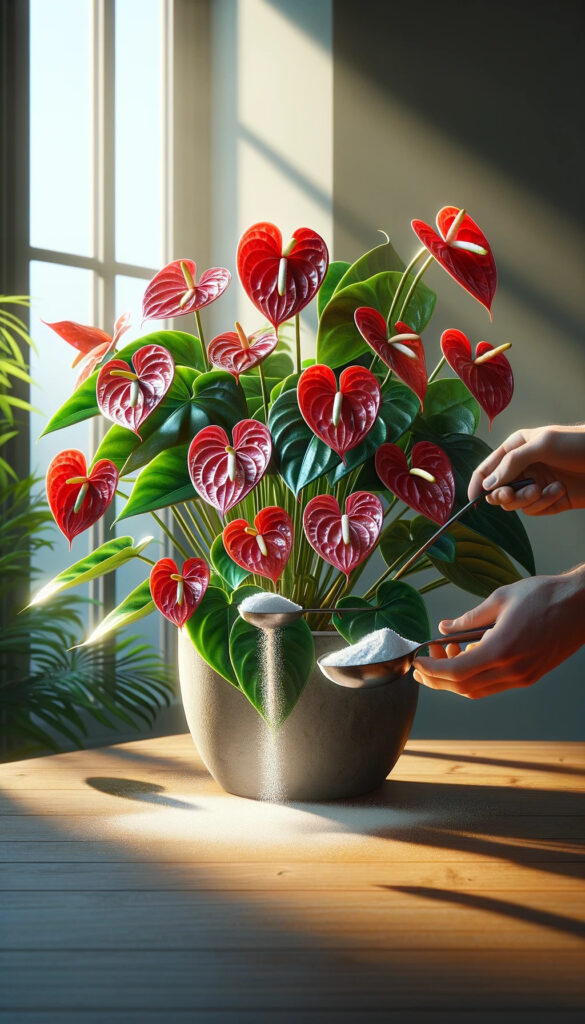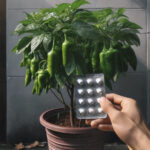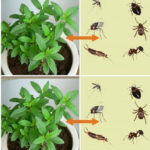Anthuriums, also known as flamingo flowers or laceleaf, are popular houseplants known for their striking, glossy leaves and vibrant, heart-shaped flowers. To keep anthuriums healthy and thriving for many years, follow these essential care tips:
1. Proper Lighting
- Bright, Indirect Light: Anthuriums thrive in bright, indirect light. Avoid direct sunlight, which can scorch the leaves. Place them near a north or east-facing window or provide filtered light.
2. Ideal Temperature and Humidity
- Warm Temperatures: Anthuriums prefer temperatures between 70-85°F (21-29°C) during the day and not below 60°F (15°C) at night. Protect them from drafts and sudden temperature changes.
- High Humidity: These plants thrive in high humidity. Aim for 60-80% humidity. Use a humidifier, mist the plant regularly, or place the pot on a tray filled with pebbles and water to maintain humidity.
3. Watering
- Consistent Moisture: Keep the soil consistently moist but not waterlogged. Water the plant when the top inch of soil feels dry. Reduce watering in the winter when growth slows.
- Good Drainage: Ensure the pot has drainage holes to prevent water from sitting at the bottom, which can cause root rot.
4. Soil and Potting
- Well-Draining Soil: Use a well-draining, peat-based potting mix. You can also use a mix designed for orchids or add perlite, pine bark, and charcoal to regular potting soil.
- Appropriate Pot Size: Choose a pot that is slightly larger than the root ball. Repot every 2-3 years to refresh the soil and accommodate growth.
5. Fertilizing
- Balanced Fertilizer: Feed anthuriums with a balanced, water-soluble fertilizer (20-20-20) diluted to half strength every 6-8 weeks during the growing season (spring and summer). Avoid over-fertilizing, as this can harm the plant.
6. Pruning and Cleaning
- Remove Dead Foliage: Regularly remove dead or yellowing leaves and spent flowers to encourage new growth and maintain plant health.
- Clean Leaves: Wipe the leaves with a damp cloth to remove dust and improve photosynthesis.
7. Pest Control
- Monitor for Pests: Check regularly for common houseplant pests like spider mites, aphids, and mealybugs. Use insecticidal soap or neem oil to treat infestations.
- Maintain Cleanliness: Keep the plant and surrounding area clean to reduce the risk of pests and diseases.
8. Support and Training
- Staking: Larger anthuriums may benefit from staking to support their heavy flower heads and prevent the stems from bending.
9. Propagation
- Division: The best way to propagate anthuriums is through division. Carefully separate offshoots from the main plant and pot them in separate containers with the same soil mix.
10. Flowering
- Encouraging Blooms: Ensure the plant receives enough light and proper care to promote flowering. Consistent temperatures, adequate humidity, and proper feeding will help produce vibrant blooms.
Additional Tips:
- Avoid Cold and Drafts: Anthuriums are sensitive to cold and drafts. Keep them away from open windows, doors, and air conditioners.
- Regular Monitoring: Check the plant regularly for signs of stress, disease, or pests. Promptly address any issues to keep your anthurium healthy.
By following these guidelines, you can ensure that your anthurium remains vibrant and healthy, bringing beauty and elegance to your home for many years.


